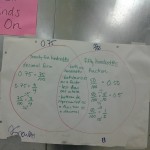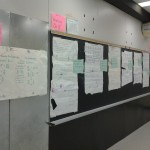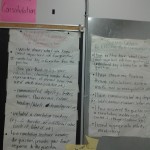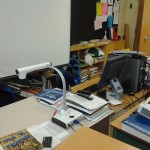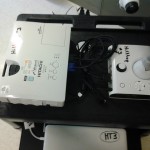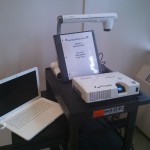Our Grade 6 team explored the use of technology in a mathematics classroom. We invested in one projector for the team previously and we wanted to expand our use of this type of technology to support student learning. One recommendation that came out of our district review was the need for increased technology to be present/used in all classes. We currently share the use of iMacs that were provided through the Grade 6 provincial math initiative a few years ago, and we wanted to add a practical tool to share student work and mathematical representations (via manipulatives/tools) when working on hands-on learning tasks. We also created common benchmark tasks to build more consistency between classes and English/French panels.
Team Members
Carolyn Thorpe
TDSB
Dinu Uscatu
TDSB
Yolanta Reyman
TDSB
Team Photo
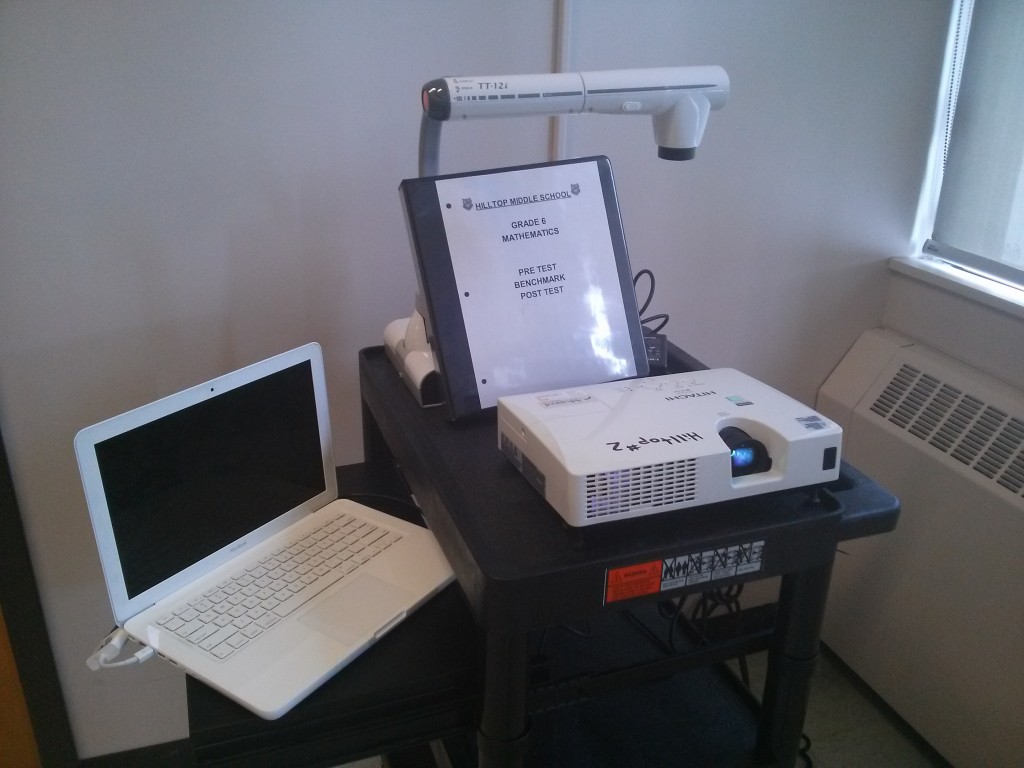
Professional Learning Goals
- learn about/share best practices for problem-solving in mathematics (what does our math program consist of, what resources are we all using, etc.), in both French and English
- create benchmark tasks to build consistency in math programming between classes (and between English/French panels)
- explore the further use of document cameras in class (modelling and sharing) and learn about all the features/uses for documentation with the Elmo (e.g., tracking student work, portfolios, evidence through images, etc.)
- collaborate to share best practices and expand use of technology in various ways
Activities and Resources
- purchase Elmo (document cameras and other technology)
- receive teacher-directed training on various math topics
- generate a list of best practices/strategies used in class for mathematics (e.g., use as a high-yield math strategy, use within a three-part lesson, math journals, word walls, sharing manipulative models, use of both English and French during mathematics as a way to build vocabulary and prepare for EQAO, etc.)
- meet regularly to collaborate on best practices, tracking of student work and creating common tasks (common benchmarks with English panel teachers)
- meet regularly to discuss student progress (both in French and with building English math vocabulary)
Unexpected Challenges
There have been more challenges than we ever thought possible. It took over a month to get an answer from TDSB about purchasing technology for the school and what vendors we needed to use. We also had difficulty with TDSB about how the money was going to be accounted for in school accounts without it being an audit problem.
We also had a very difficult time getting supply teachers early on, so we decided to change our sessions to be mostly done during in-school release time and not through supply teachers. Instead, the grant money was spent all on technology.
We also had issues with all the technology and carts arriving not assembled, so finding time to put it all together was difficult, and the principal did not want it all distributed until all the components had arrived. Our principal also had concerns about distributing different pieces of the technology without all the components being together and properly labelled (this required all components to arrive before we could assemble them). We have also had many discussions about how to house the materials and keep them secure, as all the technology components are not locked to the cart (nor do teachers have locked cupboards to store them at night).
Not writing EQAO this year has also changed how we will assess the effectiveness of using both English and French during mathematics (since the Grade 6 students in French Immersion write the Grade 6 EQAO test in English). Instead, we will rely more on our observations and how the students did on the common assessments (as compared to the English panel students).
In the end, we progressed more with our math knowledge and collaboration than we did with our technology understanding. We are hoping to continue our journey next year with the technology journey, now that our math knowledge was improved (and piloting the use of both languages in math class).
Enhancing Student Learning and Development
Our project enhanced student learning within all classes by providing a more consistent program for all Grade 6 students at the school (within both French and English panels), and will continue to do so in the future. Through collaboration, we have shared best practices to support student development and have implemented common practices (or are prepared to).
We also believe the use of technology will have great success increasing student engagement within math class time.
Sharing
Updates on all math learning (through individual teacher PD sessions) were shared with staff at grade team meetings/collaborative planning time. Also, benchmarks created as smaller groups were shared and feedback provided. Teachers shared the best practices they were implementing in class (French and English practices) and how these strategies were impacting student success/learning.
Teachers who were piloting the technology carts (two teachers to start) shared how it was being implemented in their rooms, any challenges they were having and improvements (e.g., use a cart, use the iMacs, dongles needed, etc.)
We would like to share the project with all the teachers in the building, and hope to do so once meetings resume in the new school year. We also think it is important for the French Immersion teachers to discuss how writing the Provincial Assessment Tests (Grade 6 and Grade 9) in English impacts student success and how we can support the building of vocabulary in both languages.
Project Evaluation
Our project was successful in many ways:
- we collaborated much more than we usually do (as a Grade 6 team and between English and French panels)
- we all chose to attend PD sessions on a math topic of our choosing (to meet the needs we currently have as educators and within our classroom) and shared the information we took from each session with each other during collaborative learning sessions
- we collaborated on creating a collection of benchmark tasks (including diagnostics and summative tests) to use throughout the year and be able to compare student learning between classes and English/French panels
- we finally got all the carts built, all the technology unpacked and all carts assembled/labelled to use
Resources Used
EQAO sample tasks
ONAP (Ontario Numeracy Assessment Package) – Grade 6
Nelson
Sample questions for benchmark tasks
Math Makes Sense – Grade 6
Pearson Education (textbook/teacher’s guide)
Sample questions for benchmark tasks
Resources Created
These resources will open in your browser in a new tab, or be downloaded to your computer.



